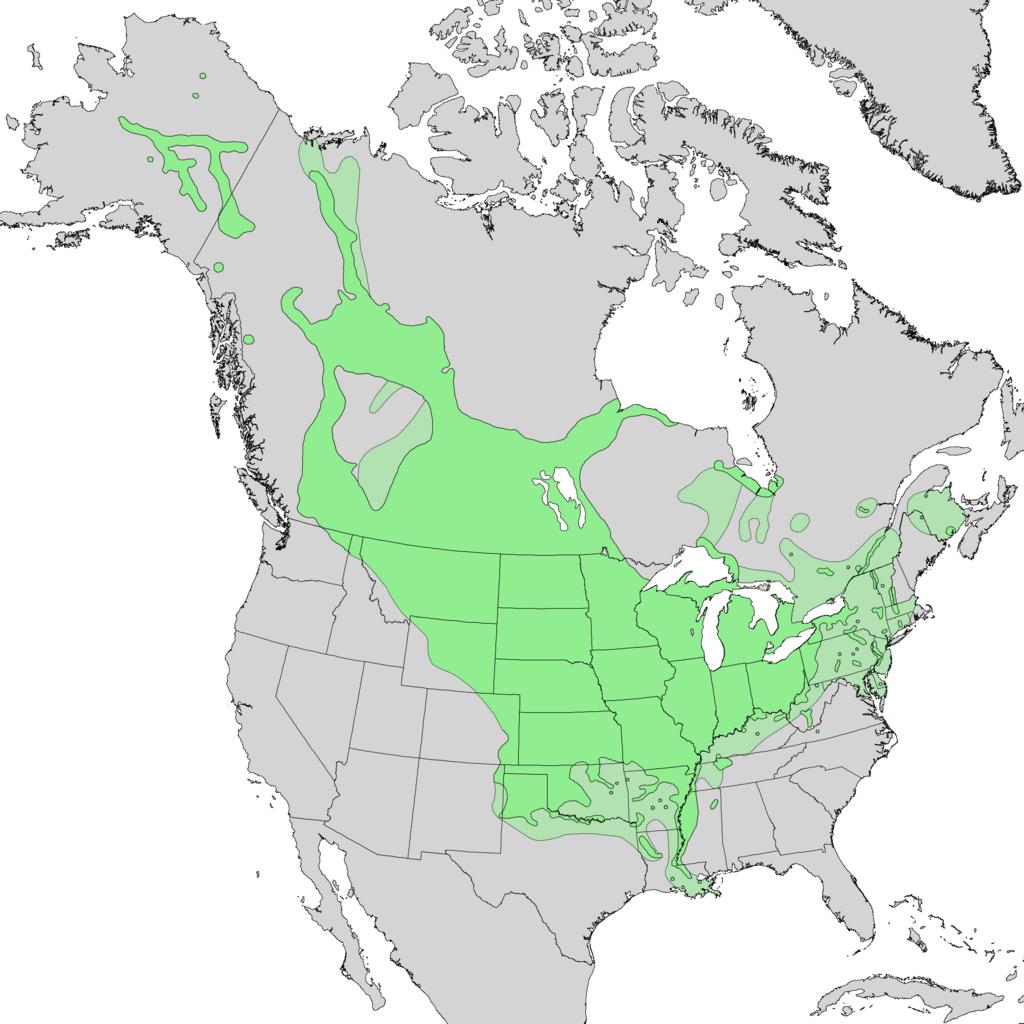Sandbar Willow
Salix interior Rowlee
Description
Sandbar willow. also known as narrowleaf willow, is a member of the willow family (Salicaceae). It forms shrubs or small trees that may grow to 20 feet tall ¹. Young branches are reddish-brown and smooth ¹. Older trunks have gray, flaking bark ². Leaves have widely spaced serrated margins and are up to 5 inches long but but only 0.4 inch wide ². It has very short petioles ¹. Male and female flowers are produced in catkins on separate plants (dioecious) ¹. Male catkins are not drooping, are up to 2 inches long and lack petals or sepals ². Female catkins are up to 3 inches long, lack sepals or petals, and are green ². Female flowers from capsules containing minute seeds with silky hairs ².

Male catkins of sandbar willow. Illinois Wildflowers ²

Female flowers and leaf of sandbar willow. Illinois Wildflowers ²
Distribution
Sandbar willow occurs along stream banks, pond edges and other wetland margins ². It is found from Alaska to Louisiana, but not in the deep south or western states. In Maryland it may be found along th Potomac River In Montgomery, Charles, Prince George’s County, and in Garrett, Baltimore, Cecil and Kent Counties 4.

Distribution of sandbar willow. Free-Images³
Wildlife Importance
Samdbar willow is a host to the Buck Moth 4. In addition it is a host to several butterfly larvae ². The flowers are pollinated by bees seeking nectar and pollen ². insectivorous birds feed upon these insects and sandbar willow is directly consumed by Mallard ducks, Ruffed Grouse and White-throated Sparrows ². It is a favorite of beavers for building lodges and dams and is a forage plant for white tailed deer and elk ².
Economic Importance
Sandbar willow is used for stabilizing stream banks and lake edges ¹, but caution is recommended at it can be invasive ¹.
Threats
In Northeastern United States sandbar willow is rare and is considered threatened in Massachusetts as well as other eastern states 5.
Interesting Facts
- A second species, Salix exigua, is also called sandbar willow, but this is found in western states. It is capable of hybridizing with S,. interior 7
- Like many willow species, sandbar willow produces salicin in its bark. This phenolic glycoside is associated with pain and fever relief. Commercial aspirin (salicylic acid) is a synthetic form of salicin 7.
References
- USDA NRCS Plant Fact Sheet: Sandbar willow
- Illinois Wildflowers: Sandbar willow
- Free-Images: Salix interior
- Maryland Biodiversity Project: Sandbar willow
- Natural History and Endangered Species Program: Sandbar willow
- World Flora Online: Salix interior
- Useful Temperate Plants: Salix interior
Contributed by J. Hull
